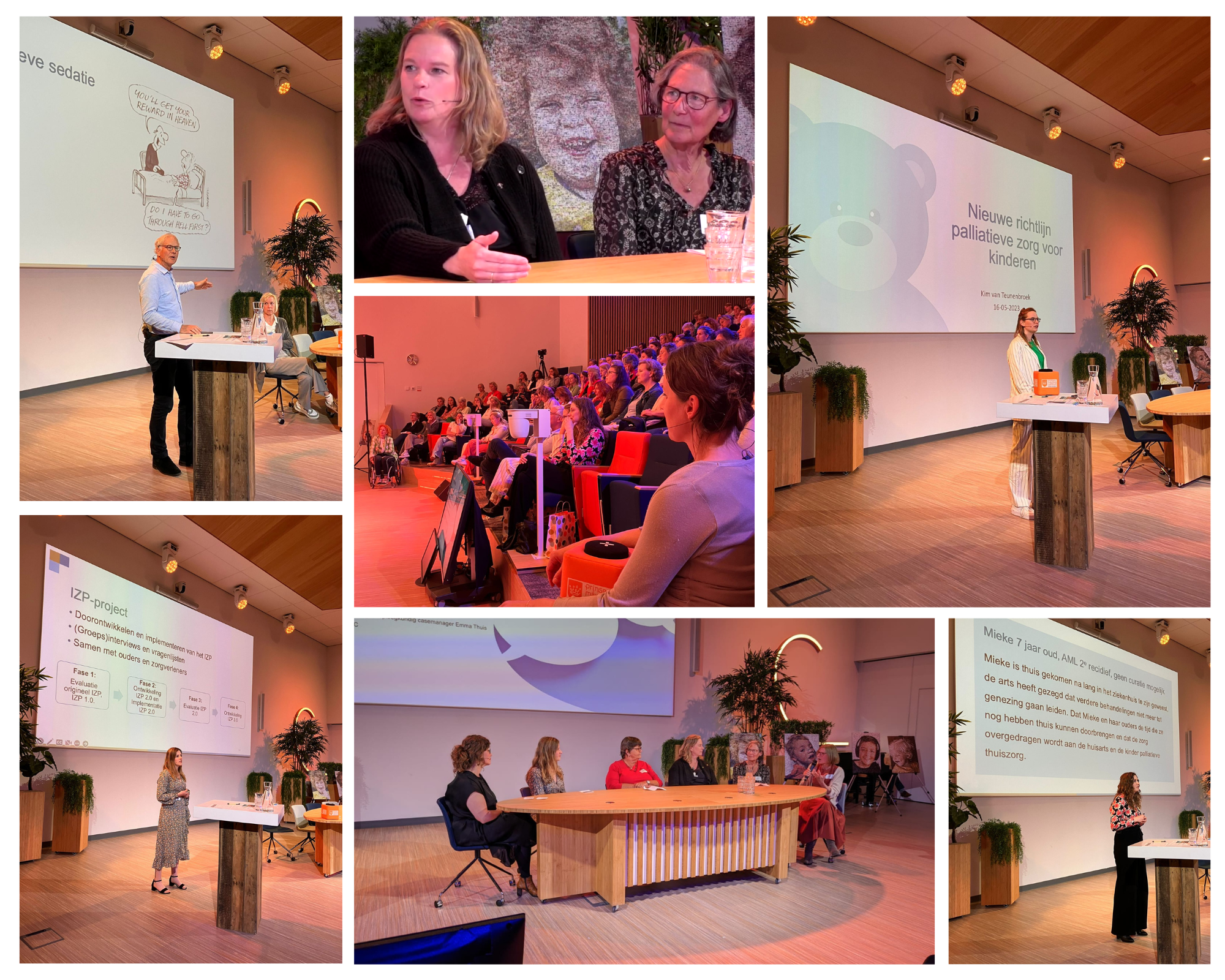Educational, inspiring and valuable. A selection of the reactions from participants in the symposium about the new guideline 'Palliative care for children' and the launch of the improved Individual Care Plan (IZP). With approximately 250 participants (in the hall and via a live stream), people from various organizations and with various functions were present in large numbers. Day chairman Ria Slingerland rightly noted that this is a reflection of the involvement and multidisciplinarity of pediatric palliative care.
“Don't fuss, act!”
Kim van Teunenbroek (PhD student guideline 'Palliative care for children', Princess Máxima Center) kicked off with a clear explanation of how the guideline came about. Using an example from practice, she showed how recommendations are formulated on the basis of scientific literature, clinical expertise and experiences of children and families.
In the presentation on palliative sedation, the baton was taken over by two familiar faces in pediatric palliative care: Erna Michiels (paediatric oncologist, Princess Máxima Center) and Eduard Verhagen (head of department, Beatrix Children's Hospital). Erna immediately cleared up a few misunderstandings: “The purpose of palliative sedation is to relieve the pain, not to put the child to sleep or quiet! And is the child still in pain? Then give a higher dose and don't wait too long. That is a message that the participants have taken to heart. When asked what they will take home after this presentation, it sounded loud and clear in the room (and online): “Don't fuss, but act!”.
The different facets of grief and loss
The final presentation on the guideline sparked a lively discussion in the room. Eline Kochen (PhD candidate emBRACE study, UMC Utrecht) showed with a case from practice which recommendations regarding grief and loss are included in the guideline. “Remember to involve siblings around the end of life. And that can be very small. For example, maybe they want to get a glass of water or pick out some music. Also keep in mind that children mourn in pieces and sometimes also want to protect their parents for their grief," says Eline.
The participants seem to recognize this and nod enthusiastically. They also think critically with Eline. For example, what about caring for the carers? And how can support by a loss and grief counselor be arranged financially? It clearly shows that those involved in pediatric palliative care are always thinking about how things can be done even better.

Individual Care Plan: follow the process of child and family
After a short moment of reflection and with new focus and energy, the next topic was discussed: the renewed Individual Care Plan. Chantal Joren (PhD student of pediatric palliative care, Beatrix Children's Hospital) urges us: “It is important in the IZP to pay attention to who the child is. What makes you happy? What brings peace? What is the best way to communicate? Completing an IZP is not possible without a child and family and follows their process. Don't they want to fill it in all at once? That is not necessary. Are certain parts not yet applicable or too confrontational? Then skip it.”
Panel discussion
In the panel discussion, Annette Groenenberg (coordinator Emma Home Team, Emma Children's Hospital), Judith Aris (assistant professor of pediatric palliative care, Beatrix Children's Hospital), Hennie Knoester (pediatrician intensivist, Emma Children's Hospital), Marijke Kars (assistant professor, Julius Center Utrecht) and Bettina Sandbergen (experience expert parent) to Chantal. Together they discussed the added value of an ICP:
“The conversations you have with each other as parents and with the care team are very valuable, because they help you find answers to a lot of questions. Who is my child? What is important to us? Where do we want to go? What does quality of life mean to us? My daughter Carmen cannot indicate for herself what is important, so we stand up for our child. As parents, we have to talk about it together.” – Bettina Sandbergen
“Many different people are involved with a child who needs palliative care. Then it is important that everyone is on the same page and that everyone has the same information. It creates peace and supports multidisciplinary working.” – Henry Knoester
After a short round of questions, an important closing remark came from a participant in the room: “It may be on paper, but it can always be adjusted. Make sure it is an organic and living document.” We can only confirm that!
Finally
This symposium was organized by the Knowledge Center for Pediatric Palliative Care in collaboration with the research team of the IZP Project and Integrated Cancer Center of the Netherlands (IKNL). Many thanks to all speakers and stakeholders for helping to make this inspiring symposium possible!
Do you want to get started with the guideline 'Palliative care for children' and the Individual Care Plan?
- The new guideline is available on the Pallialine website.
- The fan with 25 summary cards of the guideline was also launched at the symposium. The summary cards can be ordered free of charge via the IKNL webshop. The range is intended for all healthcare providers involved in palliative care for children.
- The Individual Care Plan and accompanying pocket booklet can be downloaded from the website of the Knowledge Center for Palliative Care for Children .